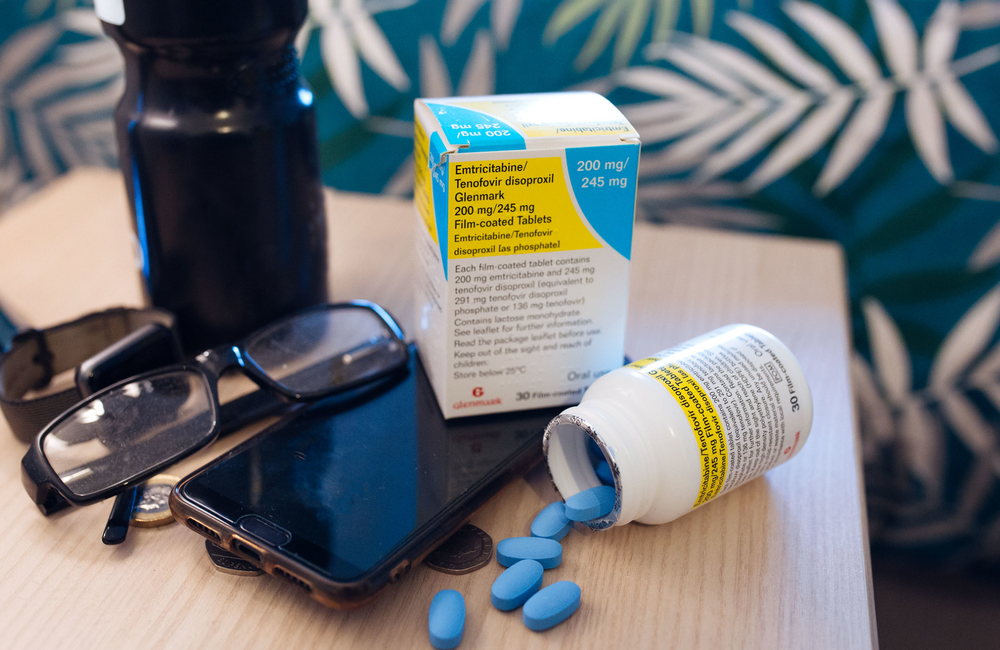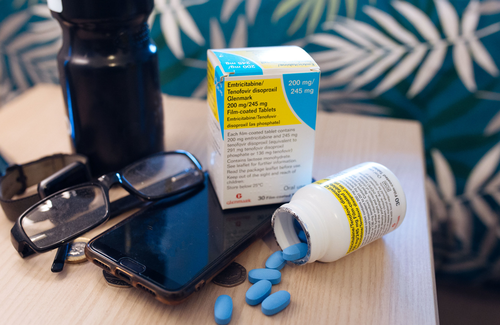
Perceived irrelevance, lack of awareness, problems with access, side effects, negative social impacts, and concerns about lack of STI protection, effectiveness and adherence are the most common reasons for not using PrEP among gay and bisexual men in Australia. This is according to a study recently published in the journal Behavioral Medicine which analysed reasons for not using PrEP among gay and bisexual men based on individual characteristics and sexual behaviour.
The study was conducted in 2018 during a transition phase from PrEP being available through clinical trials to being available under the Australian universal healthcare system, Medicare. Although this made PrEP more accessible, the uptake of PrEP among gay and bisexual men remains suboptimal. Currently, 31,000 gay and bisexual men are estimated to be at higher risk of acquiring HIV and are eligible for PrEP in Australia, however only 18,500 people – mostly gay and bisexual men – are on PrEP.
Dr Steven Philpot from the Kirby Institute and colleagues conducted a mixed-method analysis based on data collected via an online survey from the Flux study in 2018. The quantitative analysis included responses from 1039 HIV negative gay and bisexual men who had never used PrEP. Most men in the sample (86%) identified as gay, and 9% identified as bisexual. Half of the participants were over 30, 60% were university educated, and most were in full or part-time employment.
In addition to demographic characteristics, participants were also asked about recent HIV testing, drug use and sexual practices. Data on sexual practices was collected in five categories: sex with boyfriends, sex with fuckbuddies, causal sex, group sex and chemsex. Participants were grouped into lower risk and higher risk of acquiring HIV. Higher risk of acquiring HIV was defined as any of the following in the last three months: condomless anal sex with a HIV-positive partner with a detectable viral load or not on treatment, receptive condomless sex with a casual partner, diagnosis of a rectal STI, or methamphetamine use.
Most of the non-PrEP users (79%) were classified as lower risk. Half of the participants indicated they were in a relationship with at least one man in the last six months, and four-fifths reported having sex with at least one man. Half of the men had tested for HIV in the last six months, and those in the higher risk group were more likely to have done so. Men in the higher risk group reported an average of 17 sexual partners in the previous six months compared to five reported by those in the lower risk group. Furthermore, more men in the higher risk group said they had condomless sex with casual partners (74%) and fuckbuddies (33%) than in the lower risk group (0% and 6%). In addition, just under half of the participants in the higher risk group said they used an illicit drug with 21% having used drugs to enhance sex in the last six months. They were also more likely to find PrEP too expensive and were too embarrassed to ask for it, while men in the lower risk group were more likely to perceive PrEP as irrelevant.
Participants were also asked to answer a free text question in the survey: “Would you like to tell us more about why you do not use PrEP (anti-HIV pills) to help prevent you from getting HIV?“. From the bigger sample, 696 participants (67%) also answered this question and were included in the qualitative analysis. Six themes for not using PrEP emerged from the answers: irrelevance, awareness and access, health side effects, negative social impacts, concerns about lack of STI protection and effectiveness, and adherence.
Irrelevance
There were two main reasons for perceiving PrEP as irrelevant. The first reason, stated by 25% of men, was being in a monogamous or a non-monogamous relationship that only allowed lower-risk sex or sex with condoms.
“HIV is not a concern I really have. I am in a long-term relationship, and my partner is HIV-negative. Although we are open, we really only restrict ourselves to unrisky sex practices, such as oral or hand jobs with casual partners, and are sure to use condoms where not – even casual partners are few and far between.” (22 years old, New South Wales)
The second reason stated by 20% of the participants was the frequency and type of sex not requiring PrEP use.
“I do not have sex often enough to warrant taking PrEP every day.” (30 years old, South Australia)
Awareness and access
Among the 19% that indicated awareness and access as the reason for not using PrEP, some did not know enough about PrEP or how to access it. In contrast, others knew about it but had difficulty getting a prescription. Some shared their experiences waiting to schedule a clinic appointment or believed their doctor was unwilling to prescribe or had no knowledge of PrEP.
“I want to get on PrEP, but the local clinics have very limited open hours and I work full time.” (26 years old, Australian Capital Territory)
Others felt discomfort asking for a prescription.
“To be honest, I have no idea where you would get them and if it’s a current thing I can even get in my rural town in Western Australia. It’s embarrassing enough talking to my regular GP.”(46 years old, Western Australia)
Health side-effects
Among the 14% that indicated concerns around side effects, some were concerned about short- or long-term side effects and other existing medical conditions.
“The literature is silent on long term usage and as a diabetic, I don’t want the increased risk of renal damage from PrEP.” (48 years old, Victoria)
Some also believed PrEP was toxic and questioned why they should take a medication they don’t need to function.
“Prefer to not add some drug into my system that could damage me.” (57 years old, Victoria)
Negative social impacts
For most of the 11% who stated negative social impacts as their reason for not using PrEP, condom use was the only responsible prevention strategy, and they worried wide use of PrEP would be damaging to the community. These participants believed any sex without condoms was irresponsible and promiscuous. They perceived PrEP as a threat to their community instead of a chance to broaden safer sex practices.
“I am accountable for my actions; guys who are on PrEP have a tendency to overstep boundaries and have a blasé approach to safe sex.” (25 years old, New South Wales)
Concerns about lack of STI protection and effectiveness
Only 4% of the respondents mentioned this theme in their answers. They indicated that they would rather use condoms to prevent HIV and other STIs.
“PrEP also doesn’t protect against other sexually transmitted infections, condoms are still vitally important.” (24 years old, New South Wales)
Some also questioned the effectiveness of PrEP and available data.
“I don’t find the literature convincing that PrEP provides a higher level of protection than condom usage.” (48 years old, Victoria)
Adherence
Only 14 participants (2%) mentioned adherence concerns. They were worried about not following the recommended use.
“I tend to have a really bad memory. The need to take it on a daily basis would be a challenge.” (32 years old, New South Wales)
Conclusion
Most of the participants who said they rarely do anything risky and found PrEP irrelevant were probably correct in assessing their current risk of acquiring HIV as low; at the time of the survey they would not be eligible for PrEP. However, the authors highlight that “while PrEP may not be relevant for some at a given point in time, this may change if their sexual behaviour changes”. They add that some “may benefit from on-demand PrEP, which involves using PrEP during periods of high risk or for specific high-risk events, so long as clear messaging about its correct use is provided”.
Lastly, there were several mentions of inaccessibility and embarrassment in the qualitative analysis, which suggests that living in a rural area or having a doctor who does not know much about PrEP can make gay and bisexual men perceive PrEP to be inaccessible. “Continuing to educate doctors of the use and benefits of PrEP may facilitate increased acceptability and accessibility among gay and bisexual men,” say Philpot and colleagues. “Additionally, implementing decentralised models of care may help to address PrEP non-uptake among men who engage in higher-risk behaviours but are concerned about engaging with healthcare providers”.
Philpot SP et al. Reasons for not Using HIV Pre-Exposure Prophylaxis (PrEP) among Gay and Bisexual Men in Australia: Mixed-Methods Analyses from a National, Online, Observational Study. Behavioral Medicine, online ahead of print 17 February 2022.
DOI: 10.1080/08964289.2022.2033159
Full image credit: PrEP Emtricitabine/Tenofovir (Generic Truvada) PrEP Treatment Image 1. Image by Doctor 4U. www.doctor-4-u.co.uk Available at www.flickr.com/photos/144891950@N08/48663489683 under a Creative Commons licence CC BY 2.0.

